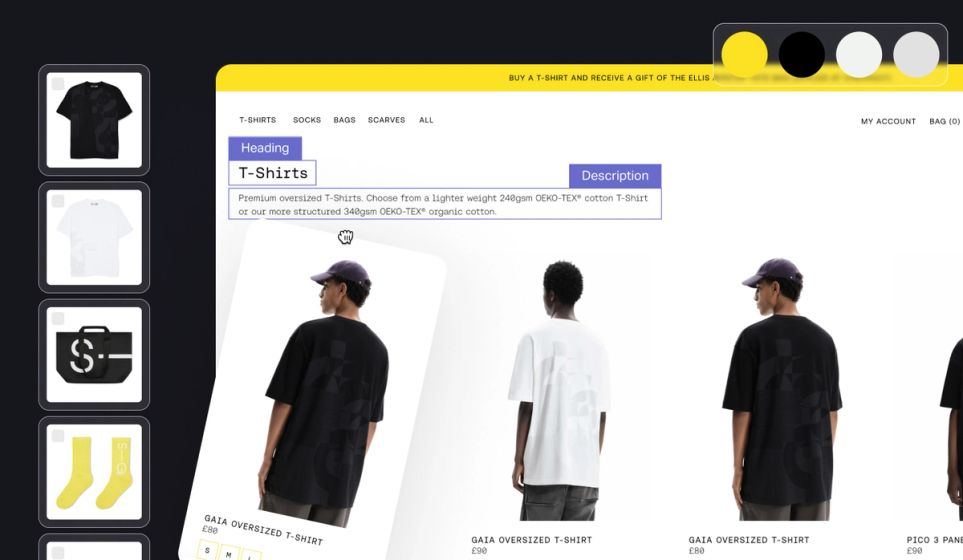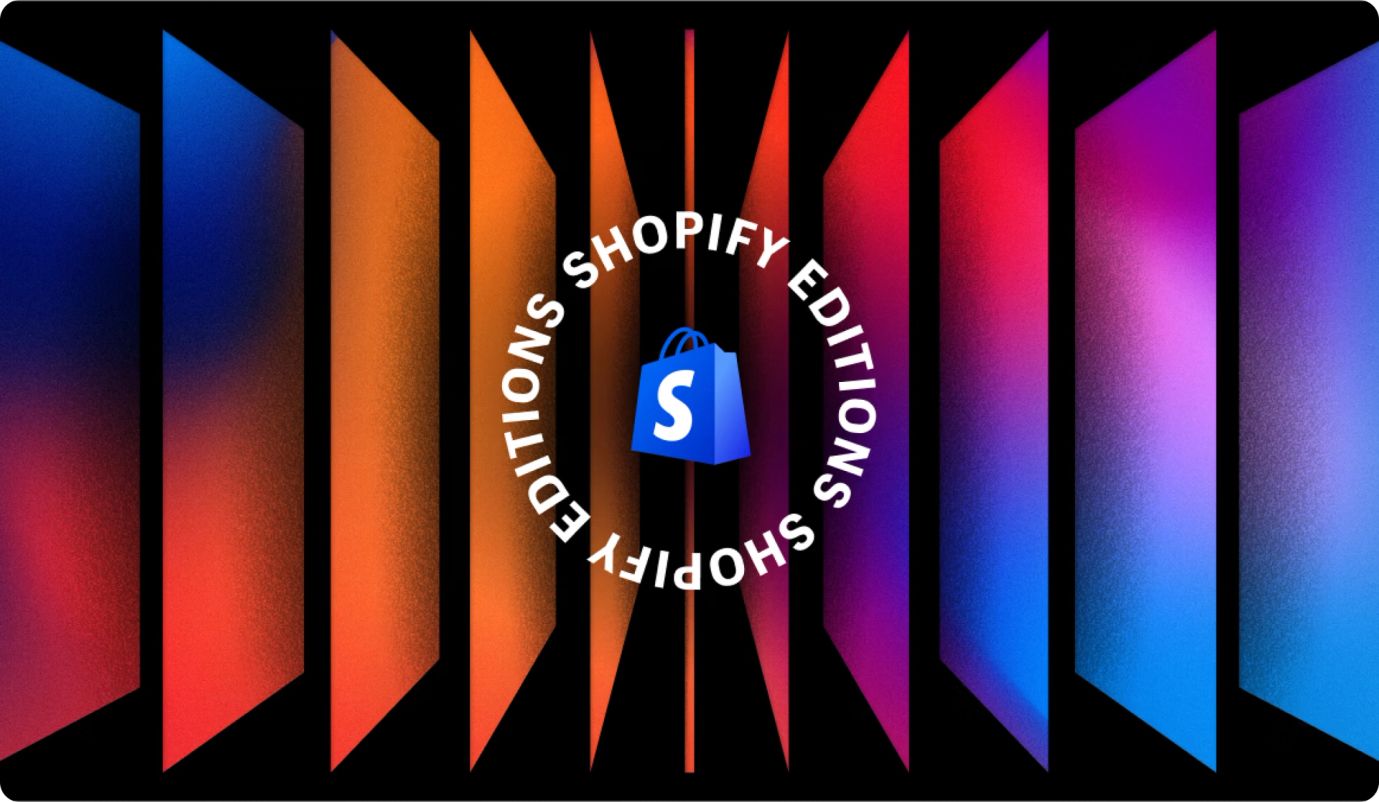
Shopify's Summer '23 Editions is here – and there’s some pretty major announcements on the development front. Our Lead Dev, Alistair, outlines the biggest and best of this latest feature drop.

Official Bundles app
Bundles have always been something that is annoying to do on Shopify. We could build the functionality ourselves, but it took a surprisingly large amount of work. The alternative? Pay for a third-party app which adds additional dependencies and complexity to the site.
Now Shopify has implemented its own 'official' bundle system. It's only 'fixed' bundles at the moment, which means store owners need to specify exactly which products are in the bundle. But we're hoping that 'flexible' bundles — where a customer can pick which products they'd like — are added soon!
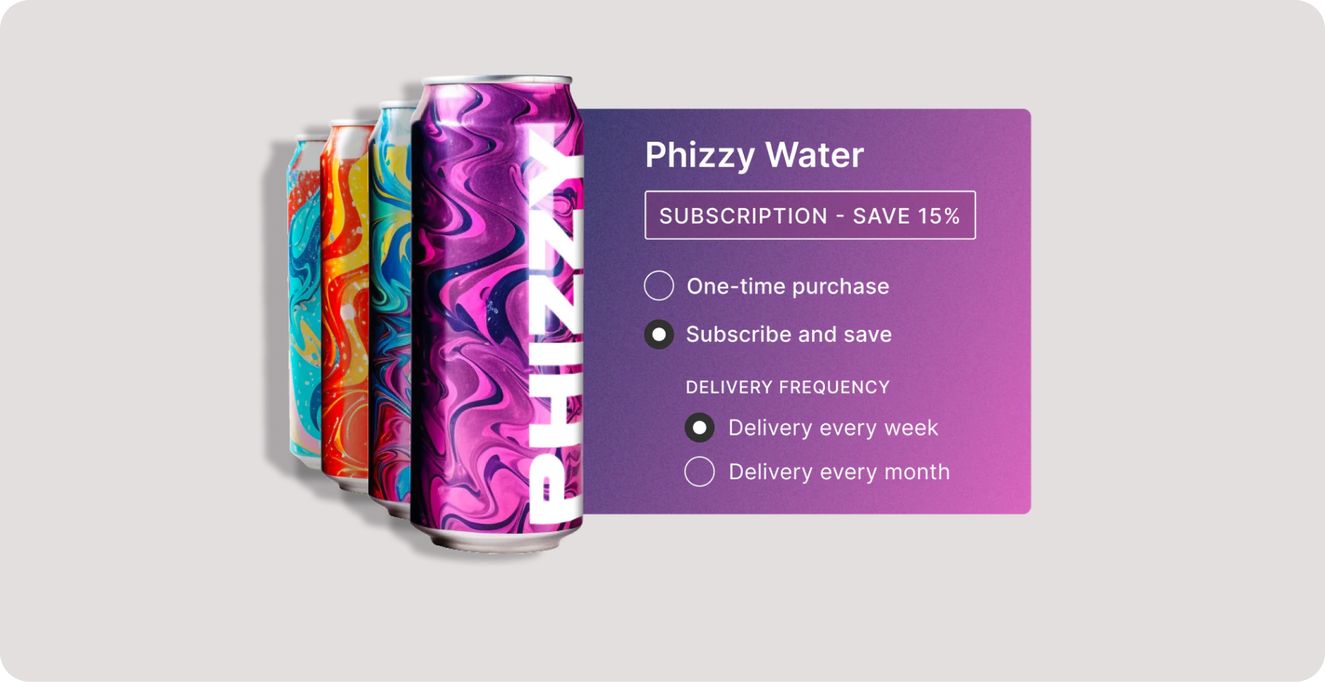
Official Subscriptions app
This one is huge! We've been working with subscriptions apps for a long time and the addition of an official integration will really shake the scene. Subscriptions are a core part of loads of businesses and we're all really excited to see how this could streamline and simplify subscription management.
The official app looks pretty simple compared to the big apps – and for a really well-optimised or custom setup, they'll still be the best option for a long time at least. But, for simple setups, Shopify’s new app looks ideal and will definitely open up subscriptions to more stores.
Duplicate stores
'Duplicating' a store has previously been pretty hard. We actually built our own internal tools to make it easier to spin up a staging store or to create a new store for a multi-currency setup.
Now when you create a new store, you have the option to copy your product catalogue, files and themes to the new store. Super handy for development and if you need multiple stores that are similar!
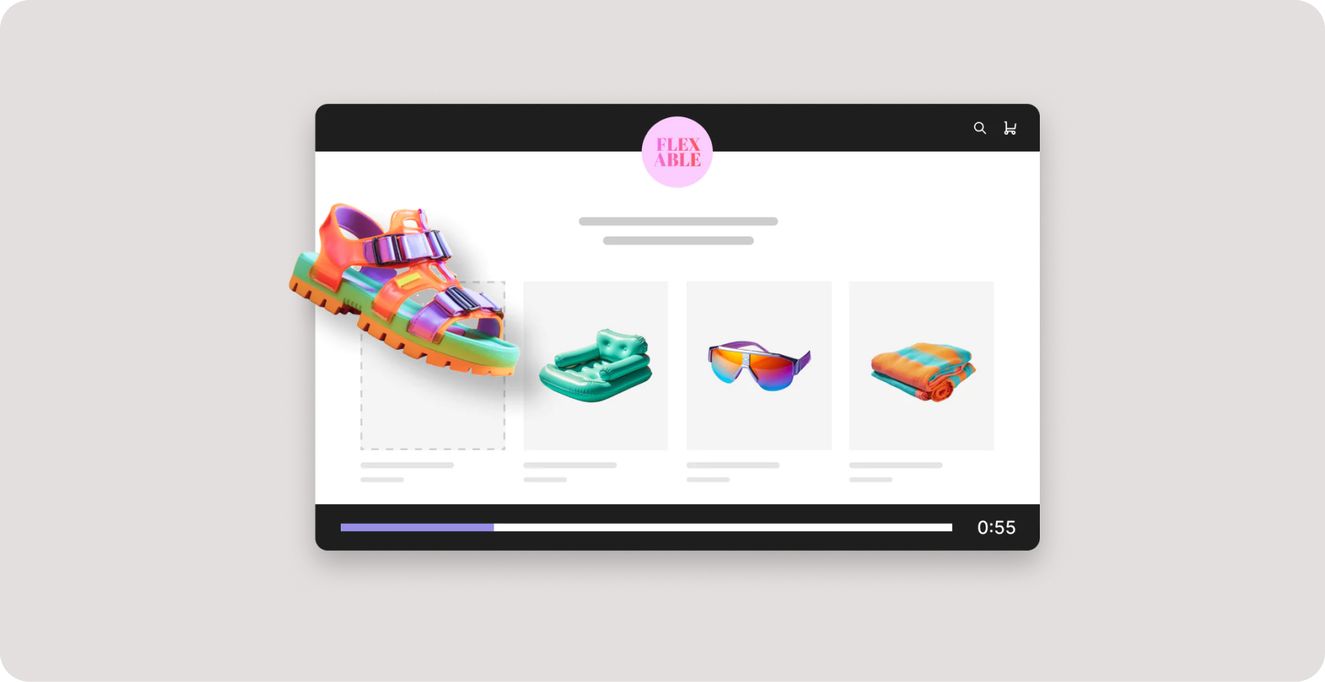
Dropshipping brands with Collective
This is a really interesting and easy way to sell products from other brands in your store – or, become a supplier yourself. You can choose a product from another company, add it to your store, and when someone purchases it, they handle the order, shipping and process for you!
Most exciting for me though is that you can do both! I love the idea of a group of stores with similar products 'teaming up' as suppliers and retailers to give customers the best possible purchasing experience.
Variant limit increase
So this might sound like the most boring sounding feature to come out of this Editions, but it's actually got us developers jumping for joy.
The previous limit of 100 variants sounds high, but it’s actually easily reached. I once built a clothing store that sold a specific jumper in Loose and Slim fit, in 6 different sizes and 10 different colours. That’s 120 variants.
So, the upcoming increase to 250 variants will make it much easier to build products with lots of options.
Customising content across B2B and Markets
Only a few weeks ago, a couple of our developers were wishing for this exact feature! Clearly someone at Shopify somehow got the message!
Shopify has added a 'context switcher' to the theme customiser, allowing store owners to change the content of the site depending on the customer’s Market (based on their location) or if they're a B2B/Wholesaler. You had a bit of control previously using Localisation, but it was pretty difficult to use, particularly with sections and blocks. Now if you need to change the content, images, products on display or anything else in the customiser per country or currency, it's as simple as going to that dropdown.
It'll be interesting to dig into how this feels to use, as it looks like it might be pretty easy to get confused about which context you're editing. Hopefully it's really clear and Shopify adds features to sync changes to make it easier to manage.
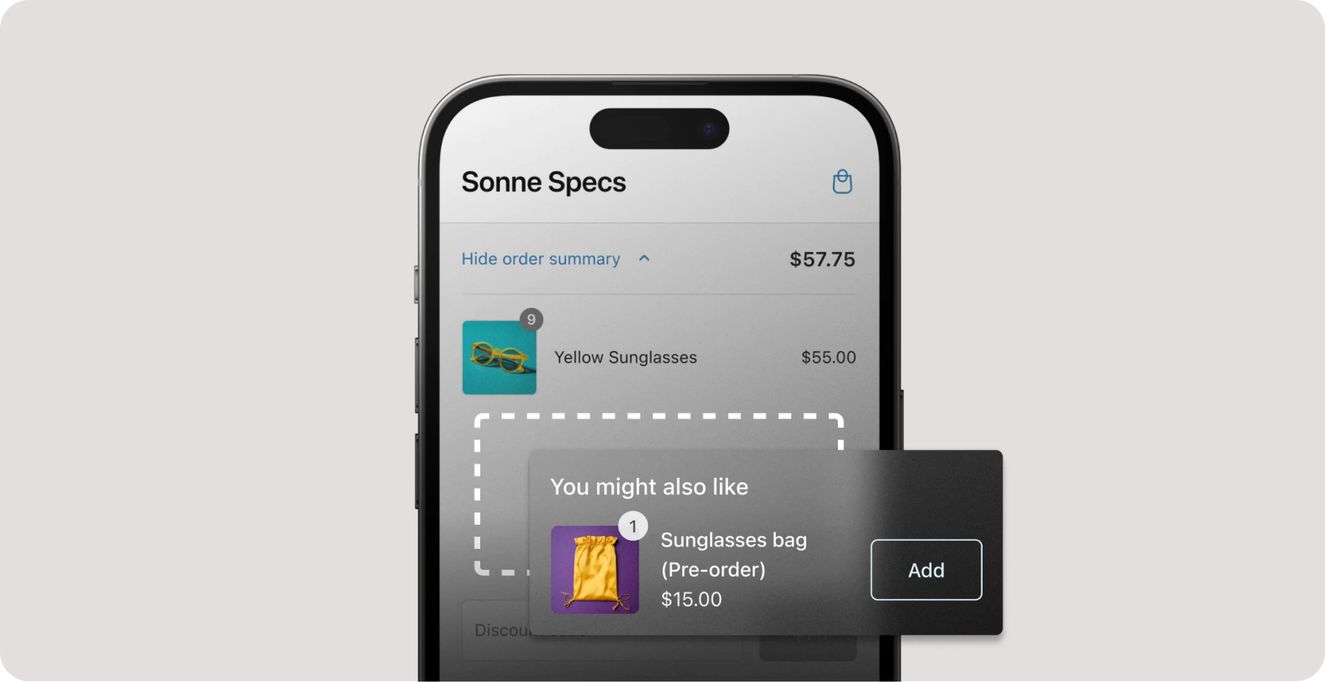
Upsells on Checkout
During the Shopify Editions Winter '23, I voiced our concerns about the deprecation of checkout.liquid and how Checkout Extensions didn't have all the functionality we needed. This is a definite step in the right direction from Shopify, giving a clear route forward for upsells and recommendations on the checkout page which were uncertain until now.
Checkout validation
Similar to upsells, there were features we'd been relying on checkout.liquid for that there were no clear replacements for. Shopify has made it easier for developers to add or change the validation rules within the checkout. A regular request we get for the checkout is preventing users from shipping to PO boxes. Until now, the best we could do was add a warning banner above the address input for all users – but still allow orders to PO boxes anyway. With these new validation rules, we can prevent checking out with a PO box and give the user more direct feedback that their address is invalid.
Section previews and Flex sections
The editor experience on Shopify has been a constant bugbear of ours. It's not bad, but when you have a large site with lots of flexible JSON templates and sections, it can get really confusing. On some of those projects we've even gone to the extent of creating a 'cheatsheet' of screenshots of each section to help.
From a first look, Section previews looks like it will make managing sections a lot easier. There hasn't been much detail over how it actually works, is it automatically-generated? Or do we upload screenshots when we make our sections like we have to with other CMSs? It'll be interesting to see when it rolls out.
Flex sections look like they could be a huge addition, allowing editors to drag+drop blocks in a page more easily. The real proof will be when we can see how it's implemented – plus, how useful it is for third-party themes that aren't based on Dawn.

Sidekick, your AI helper
Sidekick seems really powerful and a great time-saver – particularly for store admins that just want to get the information they need and move on. In terms of finding information about your store and Shopify, it seems super handy.
Like many AI tools however, make sure you keep an eye on its output. We've seen Sidekick returning information about Shopify that is completely incorrect, and breaking themes when instructed to make code changes. Hopefully these will be ironed out, but it's worth being a little cautious with this one!
Shopify Flow on all plans
Shopify Flow is an automation tool that allows you to automate actions in your store with simple If-This-Then-That style rules. It's been available for a long time on Shopify Plus, but now it's available on all plans. Nice!
Pages for Metaobjects
Metaobjects were the big star of Editions Winter ‘23, and we've been loving them since their release. Metaobjects make it so much easier to build advanced CMS setups that are still really easy to manage and edit. During our first development call after their announcement, we talked about our disappointment that they could only be used on existing pages and products, not be given their own URLs and Templates.
Once again Shopify listened! Metaobjects can now have their own URLs, allowing us to take that same advanced CMS setup onto the frontend of the site like many other full-on CMSs. Previously for a site with an event system, we'd be building that part on a different platform or by re-using blogs. But now we can build that system right into metaobjects in a way that makes more sense, works better for SEO and is so much easier to manage!
I'm really excited about this feature and looking forward to seeing what our team can do with it!

Marketing Tools upgrade
Klaviyo is a standard recommendation for our stores, providing really helpful and advanced email+SMS flows. We use them to help engage with customers and do effective email marketing. It’s the bread and butter of our sister agency Parallel 9.
That's why we're really interested in Shopify stepping up their digital marketing game with Marketing Tools, providing flows and templates that might just rival Klaviyo's at some point. They currently seem a little simple. But, for smaller stores with less complex marketing needs, they could do the job and keep everything nicely within the Shopify platform. Definitely one we've got our eye on!
That’s our initial verdict, in a nutshell. Stay tuned to see what we make of Shopify’s latest feature drop after we’ve put them to the test over the coming months.

